



The year was 1961 and the success of the mass-produced car was causing a radical downsizing of the motorcycle market. Moto Guzzi, empowered with enviable design capacity, responded to the slowdown by exploring new markets, from delivery tricars to agricultural machinery and special vehicles, including cars.
Moto Guzzi design engineer Giulio Cesare Carcano (Milan, 1910-2015).
For these cars, the brilliant engineer Giulio Cesare Carcano designed a 90° V-twin air-cooled engine intended for a sports version of the Fiat 500, capable of reaching 140 km/h.

At the Fiat Lingotto factory in Turin they liked the new engine, but the annual quantities requested by the then company chairman Vittorio Valletta were beyond the production capacity of the Mandello del Lario plant and the agreement came to nothing. Carcano was not disheartened: he increased the displacement of the twin-cylinder engine to 754 cc to use it on the “3X3”, a special variable-track vehicle with three-wheel drive for Alpine troops.
Meanwhile, a ministerial tender was launched for motorcycles for Italy's Highway Police; the winner would be the bike that could cover 100,000 km with the lowest maintenance costs. It was the ideal occasion to mount Carcano’s twin-cylinder engine on a motorcycle, the Moto Guzzi V7. The innovative project combined the reliability of automotive standards with an unrivalled level of comfort and mechanical affordability, which also attracted the interest of foreign police forces, beginning with Los Angeles. The commissioning of the new V7 700 began in 1964. The bike had a 703.3 cc engine which developed 40 HP, and it weighed 230 kg. In 1966 mass production began, for the police and foreign markets, and the following year the V7 700 was distributed in Italy at the competitive price of 725,000 lira, much more affordable than the German and English competitors.
Moto Guzzi V7 700 bikes from the end of the 1960s.
EVOLUTION ACCORDING TO LINO TONTI. Giulio Cesare Carcano's creation was perfected by an expert design engineer who joined Moto Guzzi in 1967: Lino Tonti. Hailing from Forlì, with significant experience in motorcycle racing with Mondial, Bianchi and Gilera, Tonti was asked by the general manager Romolo Stefani to expand the range of the maxi-bike from Mandello del Lario. The V7 appeared at the right time, motorbikes were sweeping back into fashion, almost as a reaction to the conformism of the car, and the market was particularly receptive to innovation.
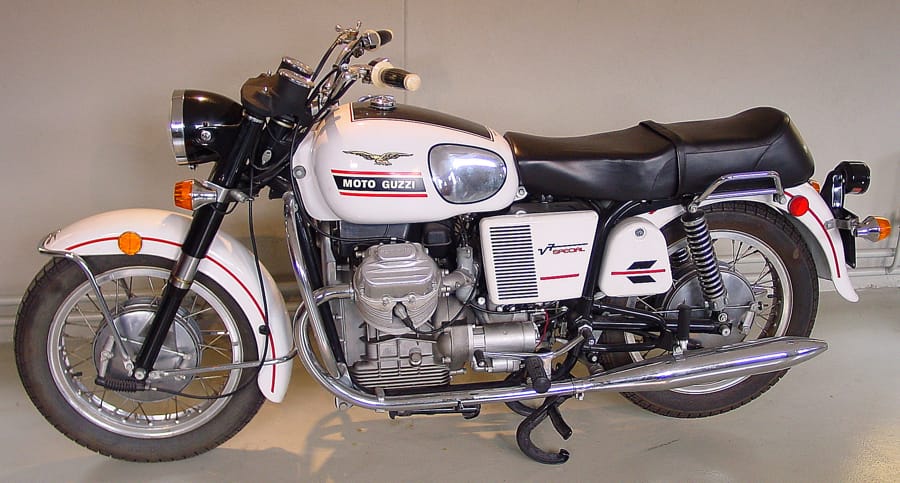
Moto Guzzi V7 Special.
The first thing Tonti did was increase the engine size to 757 and the power to 45 HP, launching the V7 special in 1969, a faster, more refined and elegant model compared to the V7 700. He would later develop, initially for the American market, the V7 Ambassador and the California, the latter destined to be one of the greatest Moto Guzzi success stories.
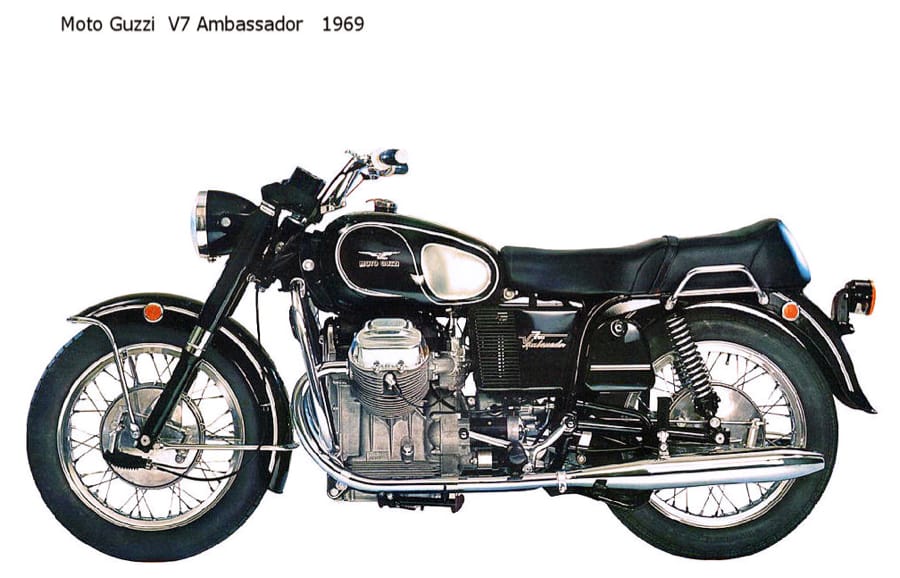
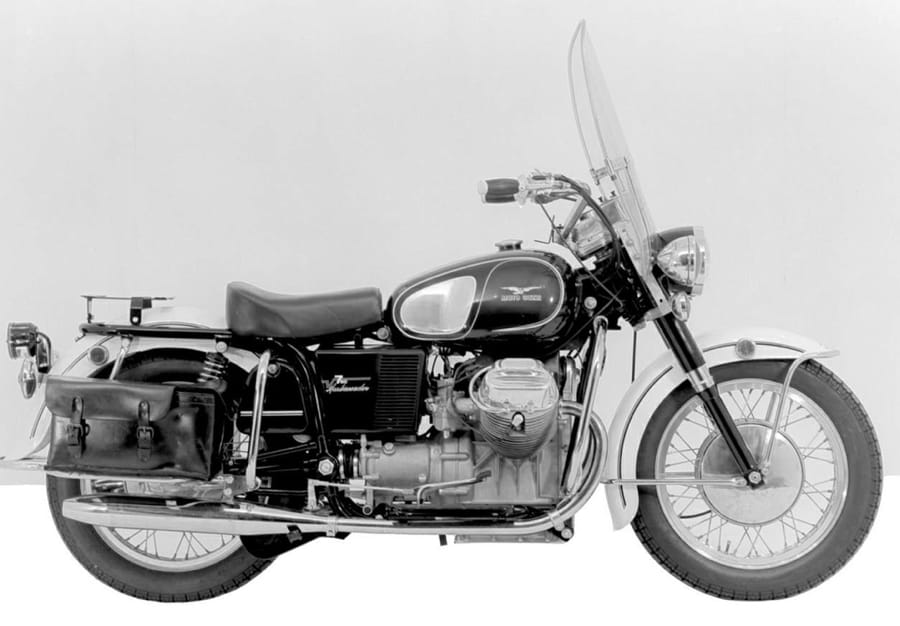
Moto Guzzi V7 Ambassador.

The next milestone was Lino Tonti's masterpiece: the V7 Sport. The designer from Forlì had clear ideas and he set the three parameters of the sport bike from Mandello: 200 km/h, 200 kg, 5 gears. To reach the objective he made some changes to the engine, taking the displacement to 748.3 cc and the power to more than 52 Hp, redesigning the crankshaft and camshafts, and placing the alternator in the front in order to keep the vertical bulk down.

Moto Guzzi V7 Sport.
The engine was housed in a tight, double-cradle frame in chromemolybdenum steel, painted red for the first 200 units assembled directly in the experience department in Via Parodi 57. The bike made its debut in 1971 and in June of the same year took part in the "Monza 500 kilometres" race, taking third place with Raimondo Riva. This was the beginning of a series of impressive results in endurance races such as the Le Mans and the Liège 24 Hour trials, which, together with very popular riders like Vittorio Brambilla, made the V7 Sport the most famous Italian sports bike of the 1970s.
L-R: Raimondo Riva on a Moto Guzzi V7 Sport in Monza. Bol d’Or, 1971: Vittorio Brambilla on a Moto Guzzi 850.
FROM THE V7 TO THE 850 GENERATION. Over a couple of seasons the technological evolution implemented on the Moto Guzzi V7 Sport was rolled out to the rest of the range. The new frame, the four-pad front brake and the five-speed transmission introduced on the V7 Sport represented, together with the increased engine size, the primary innovations of the V850 GT, the model that marked the retirement of the successful V7 Special in 1973.
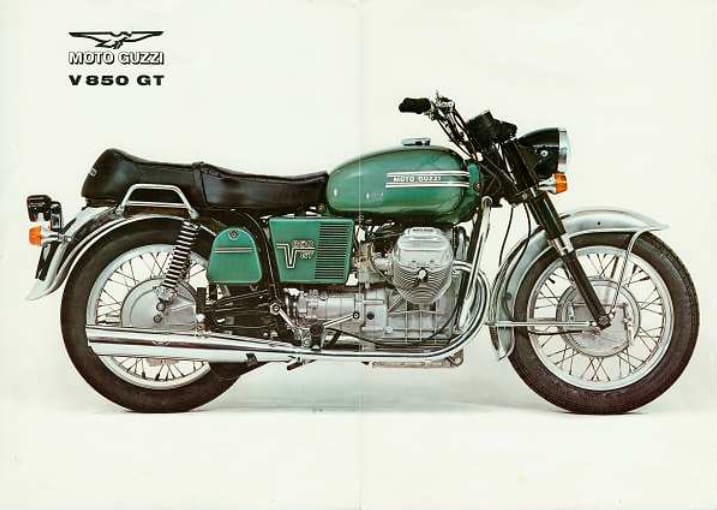
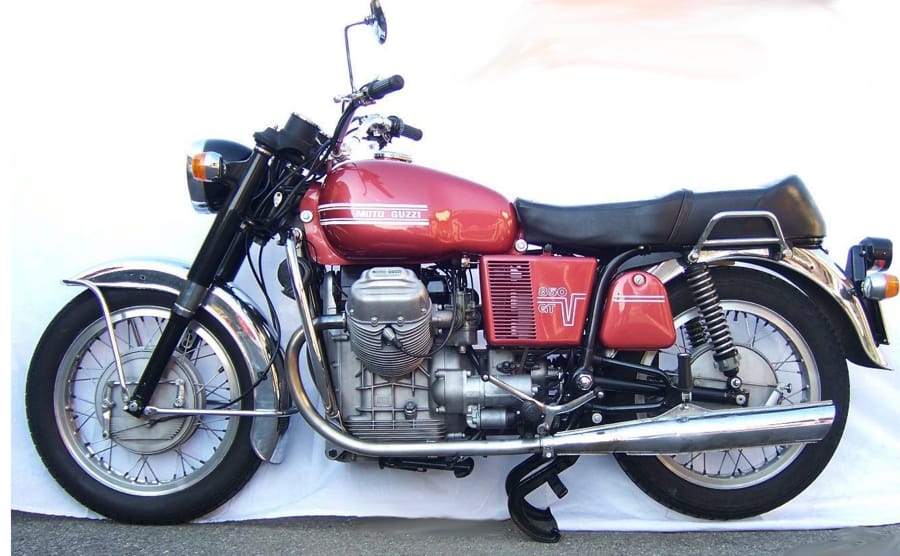
Moto Guzzi V7 850 GT.
The Sport also lost the famous alphanumeric name, when it was replaced by the Moto Guzzi 750S in 1974. The last model to give up the celebrated label was the V7 850 California, which would pass the baton to the new 850 T California in 1976.
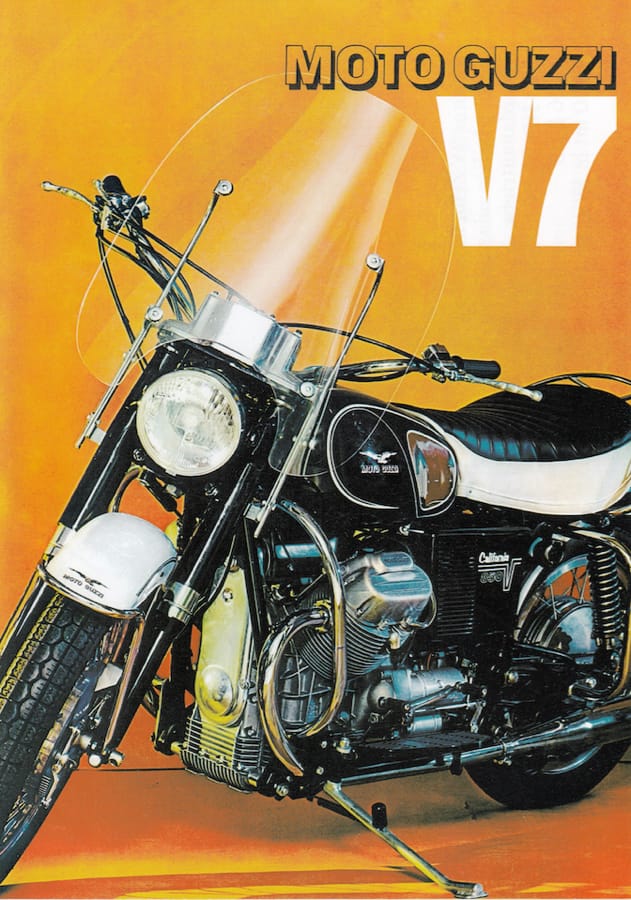
Moto Guzzi V7 850 California (brochure MG).
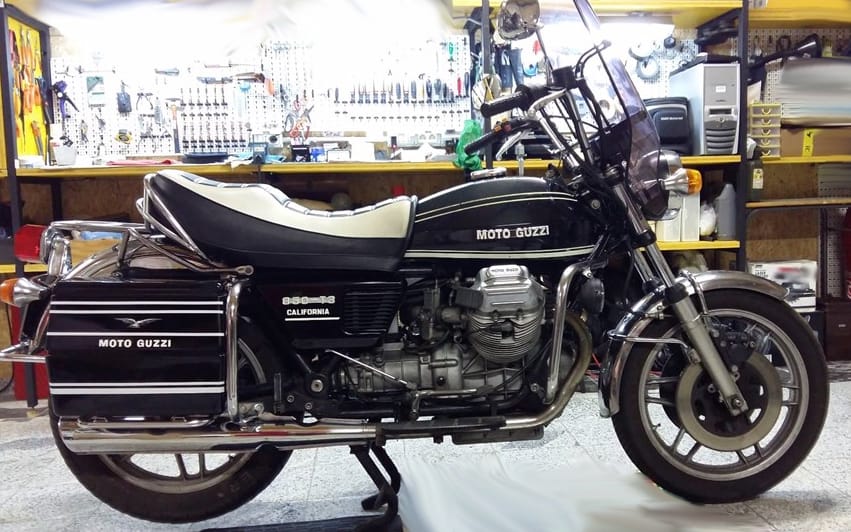
Moto Guzzi V7 850 GT.